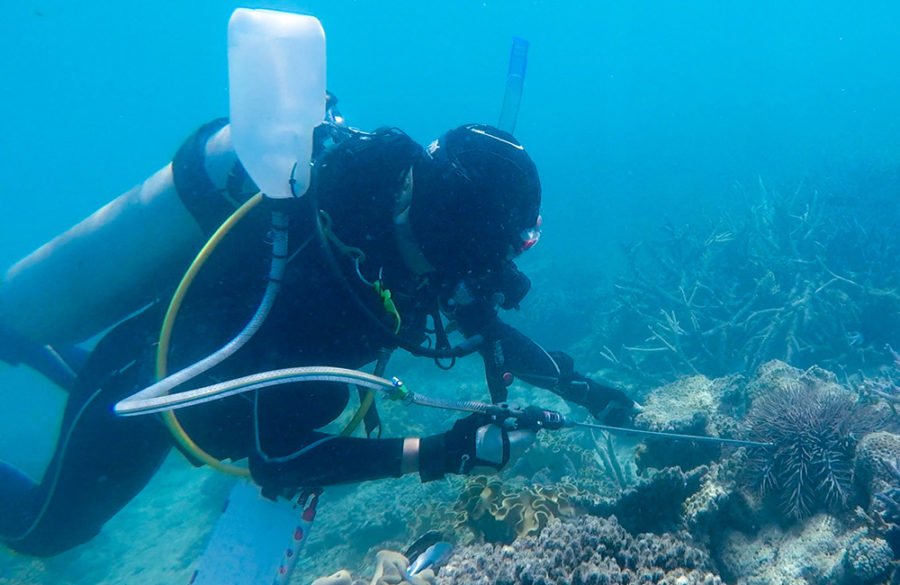Eradicating crown-of-thorn starfish at night may improve conservation efforts

According to a new study published in Royal Society Open Science today, conservation efforts to eradicate the crown-of-thorn starfish may be more effective at night.
The crown-of-thorns seastar (COTS) is notorious for its destruction of an estimated 42 per cent of Great Barrier Reef corals – and the species’ havoc across the Indo-Pacific is projected to worsen with increasing ocean acidification.
Like many marine invertebrates, the creatures operate nocturnally, making their presence in reefs very difficult to identify during daytime hours.
But most COTS detection surveys are conducted during the day, which the American and French authors say directly diminishes the effectiveness of pest control campaigns, and therefore, the health of reefs.
Led by Mohsen Kayal, a scientist from the University of California, Santa Barbara, the researchers examined reef areas of varying structural complexity and seastar abundance in Moorea, French Polynesia. They recorded and compared measurements of daytime and night-time COTS densities.
Results showed that the average detected COTS density was 27 per cent higher at night-time – indicating a 27 per cent underestimation of the pest’s population size when measured during the day.
Given that an adult specimen can consume an estimated 160-480cm2 of coral tissue per day, the authors say mismanagement of COTS outbreaks can be the difference between life and death for significant portions of reef areas.
The authors hope that their study will inspire change in COTS eradication techniques in order to create better outcomes for corals.
“We advocate accounting for detection bias in conventional surveys and control campaigns, or complementing them with observations performed by night, in order to strengthen detection and control of outbreaks,” they wrote.
“Alternatively, COTS surveys can be complemented by indirect measurement protocols such as DNA-sequencing reef water samples or monitoring the characteristic feeding scars that the seastar leaves on corals that are preyed upon.”


